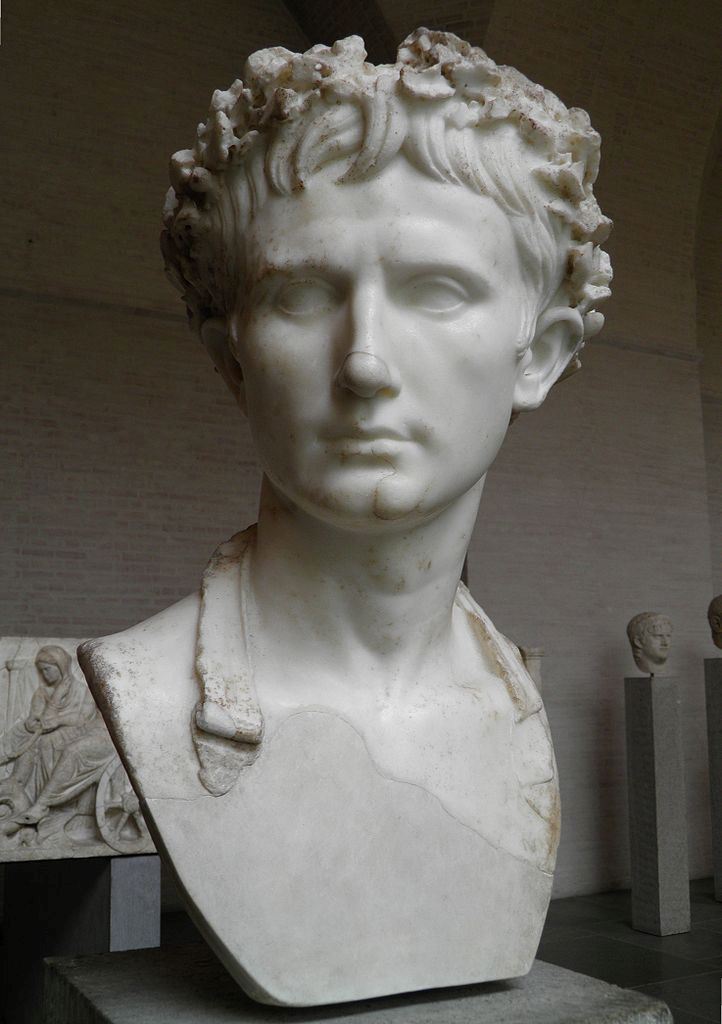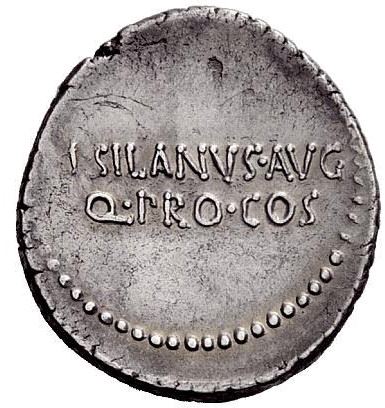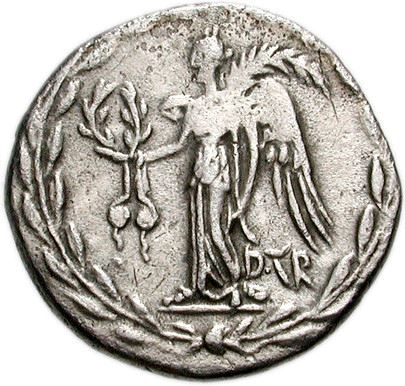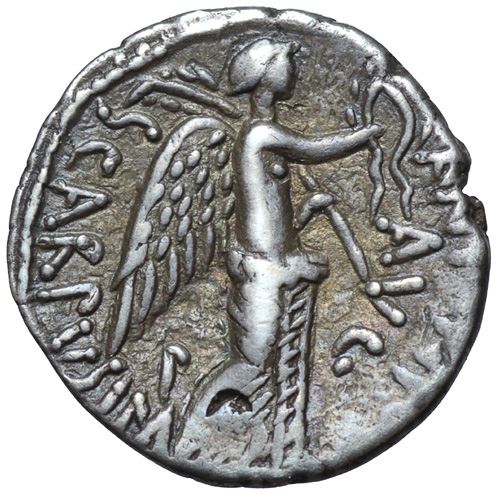This category covers the coins minted from the defeat of Sextus Pompeius and the fall of Lepidus in 35 BC, and until the ascension of Octavian as Augustus in 27 BC.
While the official coins of the late Republic were still minted under the control of the moneyers, it became more and more common practice for imperators to coin their own money to pay their troops and for propaganda purposes.
While the official coins of the late Republic were still minted under the control of the moneyers, it became more and more common practice for imperators to coin their own money to pay their troops and for propaganda purposes.
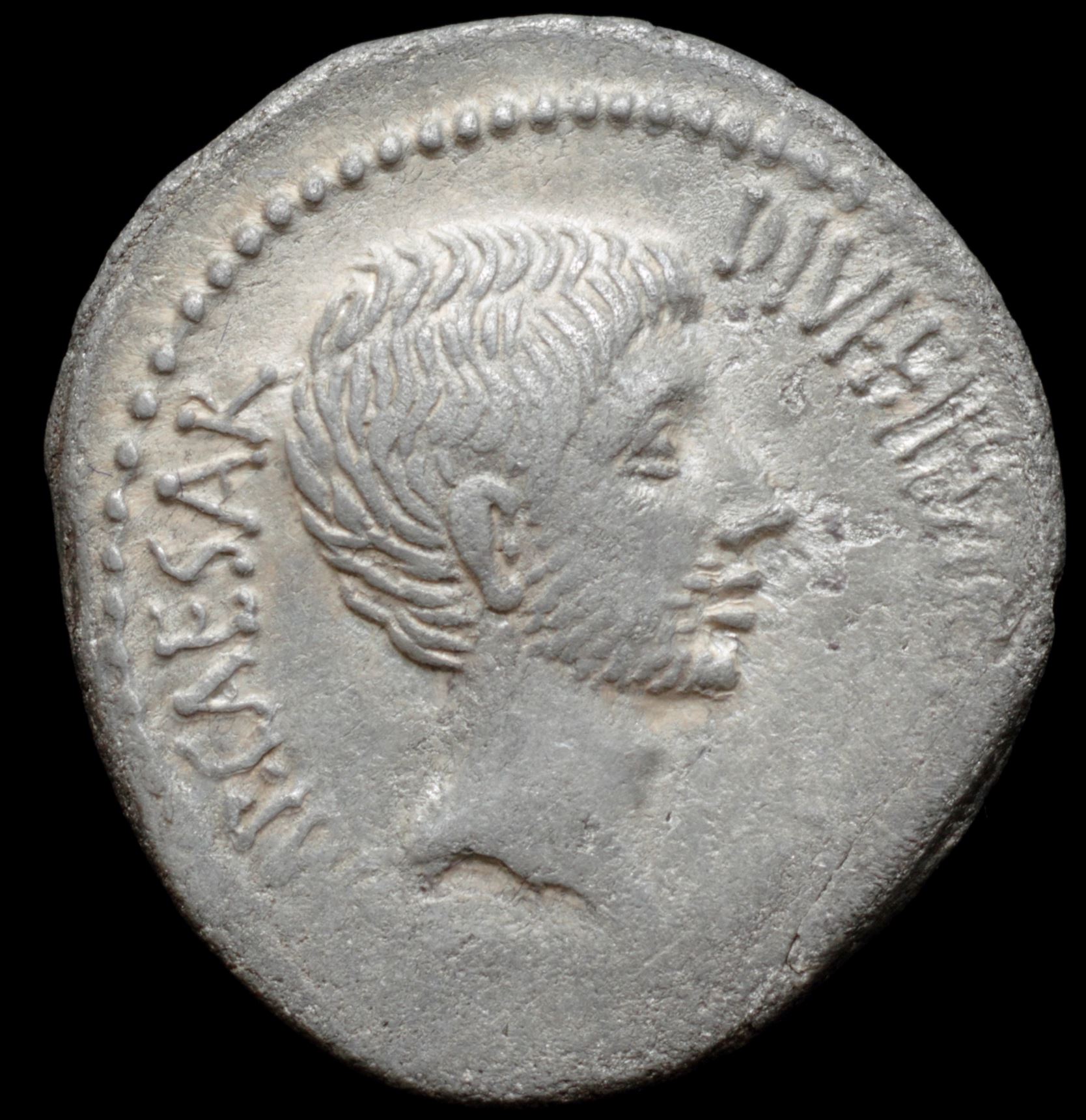
Octavian was was the founder of the Roman Principate and is considered the first Roman emperor, controlling the Roman Empire from 27 BC until his death in AD 14.
He was born Gaius Octavius, and when his maternal great-uncle Julius Caesar was assassinated in 44 BC, Octavius was named as his adopted son and heir.
As Augustus, he restored the outward façade of the free Republi...
He was born Gaius Octavius, and when his maternal great-uncle Julius Caesar was assassinated in 44 BC, Octavius was named as his adopted son and heir.
As Augustus, he restored the outward façade of the free Republi...
Marcus Junius D. f. M. n. Silanus was a descendant of the noble Roman house of the Junii Silani. He struck coins in 33 BC as Quaestor pro consule and Augur together with Marcus Antonius.
Silanus was probably the son of Decimus Junius Silanus, consul in 62 BC, and Servilia, and perhaps the grandson of Marcus Junius Silanus, consul in 109 BC. Before the Battle of Actium, Silanus went ov...
Silanus was probably the son of Decimus Junius Silanus, consul in 62 BC, and Servilia, and perhaps the grandson of Marcus Junius Silanus, consul in 109 BC. Before the Battle of Actium, Silanus went ov...
Decimus Turullius was one of the moneyers for the year 31 BC, where he struck coins jointly with Marcus Antonius. He also served as Quaestor in 44 BC.
He is mentioned as one of the murderers of Caesar, and afterwards he and Tillius Cimber went to Bithynia , and took command of a fleet there. After the battle of Philippi in 42 BC, he fled to Sicily with his fleet and a large sum of mone...
He is mentioned as one of the murderers of Caesar, and afterwards he and Tillius Cimber went to Bithynia , and took command of a fleet there. After the battle of Philippi in 42 BC, he fled to Sicily with his fleet and a large sum of mone...
Lucius Pinarius Scarpus was a grandnephew of Julius Caesar by one of his sisters, Julia Major. His cousins were the consul Quintus Pedius, Octavia Minor (the fourth wife of Marcus Antonius), and Octavian. He struck coins in 31 BC in conjunction with Marcus Antonius.
Little is known on Scarpus' early life. He is first mentioned in the ancient sources when Caesar was assassinated in Rome ...
Little is known on Scarpus' early life. He is first mentioned in the ancient sources when Caesar was assassinated in Rome ...

